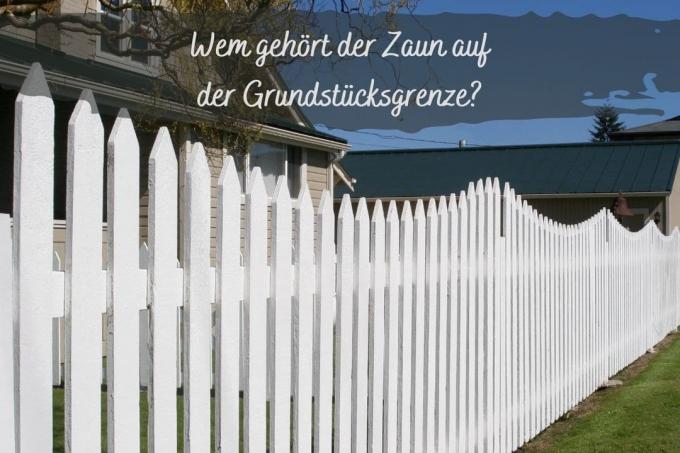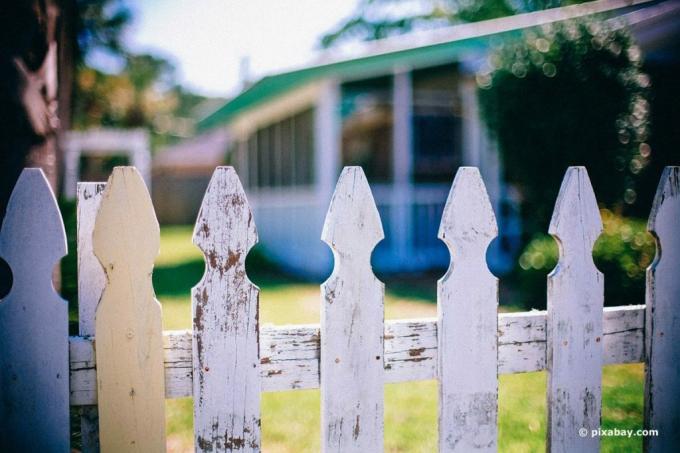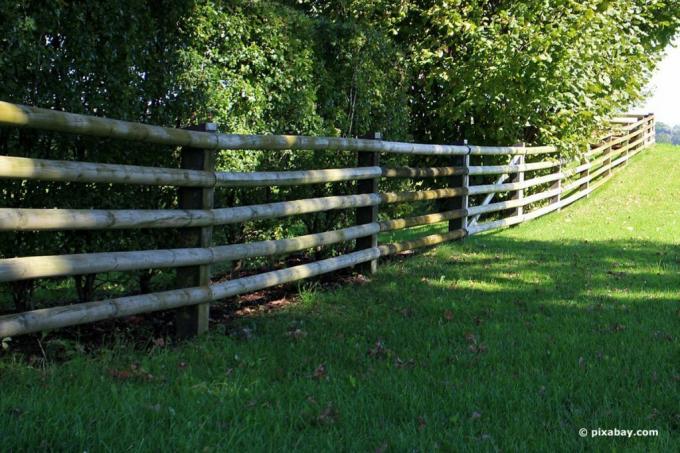
table of contents
- Location and construction obligation
- Whose reason, its enclosure
- The mandatory enclosure
- The common enclosure
- The legal fence
- frequently asked Questions
The neighbors are a source of recurring joy. When it comes to the common border, there is often disagreement. One of the most common questions is who owns the fence on the property line.
In a nutshell
- Each federal state can regulate the ownership structure for fence systems on the border individually
- Most federal states grant the residents of border fences equal ownership shares
- The point of view for so-called “legal fencing” is clearly specified
Location and construction obligation
Who owns a fence depends on two key factors. On the one hand, this is the land on which the plant is located. On the other hand, however, a possible statutory installation obligation also has an impact on the acquis.

Whose reason, its enclosure
In general terms, the principle that a structure, including a fence, belongs to the person on whose property it is built. This means that enclosures a little off the boundary line can be clearly assigned to an owner. Systems directly above the property line therefore belong proportionally, usually in equal parts, to the two adjacent owners.
Attention: In many federal states there are guidelines for height restrictions, etc. for Fences on the property line. It is therefore not always worthwhile to move the structure slightly into your property in order to deprive the neighbors of their say.
The mandatory enclosure
On the other hand, an enclosure that must be built is a special case. It can arise from different areas of law and therefore also be required from a wide variety of perspectives.
Such an obligation currently applies from the country-specific, legally binding law regulating neighborly matters - neighboring law:
- Baden-Württemberg (only outside)
- Rhineland-Palatinate
- Saarland
- Saxony-Anhalt
- Thuringia

Other areas of law that require a regulation of the separation between right and left or steer them into predetermined paths are the so-called development plans. However, they are not a universal law, but only cover individual building areas. They are neither locally nor regionally or even nationwide legally valid.
Whoever owns a fence structure erected directly on the property boundary is based on the obligation to erect it in this so-called enclosure request. If you have to build the fence, you have to keep it in good condition, but at the same time you own it.
The common enclosure
Joint fencing is one way of clarifying the status quo of legal fencing. It is used in these federal states:
- Baden-Wuerttemberg
- Hesse
- North Rhine-Westphalia
- Rhineland-Palatinate
- Saarland
- Saxony-Anhalt
- Schleswig-Holstein
- Thuringia
The rule here is that mandatory fences on the border belong equally to the two parties involved.
The legal fence
The federal states of Berlin, Brandenburg and Lower Saxony are taking a different approach to clarifying the question of ownership. The concept of legal fencing is not - as one might mistakenly assume - about legally binding fences. Instead, there are actually left and right from optical or Orientation view makes the difference. The direction of view is prescribed. With a view from the street to the entrance, the right-hand owner has to build and maintain the fencing. The building is his.

Note: If a building has its entrance at the rear, the view for the fence at the property line is still directed from the road leading to the house.
frequently asked Questions
The construction obligations for enclosures can also include so-called “green fences”, i.e. pure plantings or planted fence systems. In most cases, however, a clear distinction is made here in neighboring law and in development plans.
If a border fence belongs to you alone, your neighbor can only insist on compliance with the applicable legal provisions. All other matters can be freely determined by you. You are, however, free to give your neighbors a say in any cost sharing.
No. The “front side” of a fence is only an optical feature. The practical function of a partition or subdivision is fulfilled independently of this.

